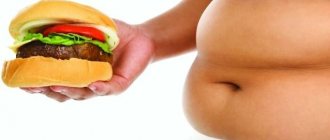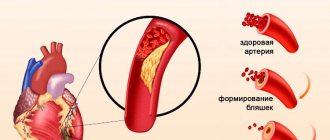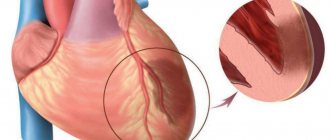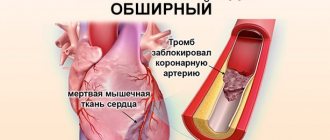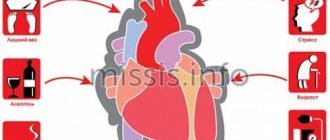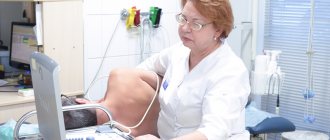Anonymously
Around the clock
Attention! The material contains information about substances, the use of which can cause serious harm to your health!
Salts are synthetic drugs that are consumed in the form of powders, tablets and smoking mixtures. Due to their low cost and quick effect, these groups of narcotic substances are very popular among drug addicts. Salts rapidly destroy the human body and cause irreversible pathologies of organs and systems. In order to help a loved one who consumes salts, it is necessary to promptly monitor changes in his appearance and behavior.
- Salt addicts
- How to identify a salt addict: main signs
- Behavior of a drug addict: how he behaves
- External changes: what they look like
- Effect on the body: how long do they live?
- Video
- How are salt addicts treated?
- I consumed salt: what should I do?
- What to do with a salt addict
- How to stop using salt on your own
- How to help a salt addict?
We will select an individual treatment plan
Free consultation 8-800-200-27-23
Salt addicts
After consuming the drug, a salt addict feels a surge of strength and vigor. Critical thinking recedes and is replaced by euphoria. Gradually, this effect subsides, and in order to prolong it, the addict increases the dose of the drug. In this state, overdoses very often occur. Situations are known in the information field when, even after a single use of “bath salts,” irreversible changes occur in the brain, leading to severe mental retardation.
The cheapness of the drug is associated with the specifics of its manufacture. Often, synthetic substances are mixed with available household products (soda, powder, solvents, flour, etc.). Of course, the use of household chemicals and questionable pharmacological agents has a negative impact on human health. The drug addict begins to gradually “fade away”: this is reflected in the form of a serious deterioration in well-being and rapid personality degradation.
HOW TO MOTIVATE A DEPENDENT FOR TREATMENT
How to identify a salt addict: main signs
People who use the drug salt, over time, acquire characteristic external and behavioral characteristics. In order to help a person with addiction, it is necessary to promptly pay attention to changes in the appearance and behavior of a loved one.
Behavior of a drug addict: how he behaves
The behavior of a person who consumes salt undergoes dramatic changes. The range of interests narrows: apathy and indifference to study and work arise. The drug addict seeks to isolate himself from his past environment and enters into new, dubious social connections.
A salt drug addict becomes more secretive and tries to hide his things. Under the influence of drugs, the addict's concentration is impaired, and inadequate mental reactions occur: joy and euphoria are replaced by sudden and causeless aggression. In a state of abstinence, the addict’s well-being sharply worsens: nausea, cramps, bowel movements, headaches, muscle spasms, etc. occur. When you try to talk to a person about your suspicions, sharp aggression often arises.
External changes: what they look like
At the initial stage of salt dependence, changes in appearance have not yet occurred. The following symptoms are typical for people with a certain history of using synthetic drugs.
The appearance of a drug addict undergoes the following changes:
- Within two hours after consuming a psychoactive substance, the addict’s pupils dilate;
- The skin tone becomes dull and numerous rashes appear. Dark circles form around the eyes caused by disruption of internal organs and lack of sleep;
- Hair becomes dull and brittle, intense hair loss is noticeable;
- In the case of intranasal use of salts, numerous irritations of the nasal mucosa occur. The addict constantly sniffs and rubs his nose, causing a chronic runny nose. The skin around the nasal passages becomes hyperemic, ulcers appear;
- Hands become wet and cold, capillary mesh often appears;
- Consuming salts leads to rapid dehydration; a person is constantly thirsty. The skin becomes dry and flaky.
During drug intoxication, the drug addict's gait becomes unsteady and coordination of movements is impaired. Of course, individual symptoms are not necessarily a sign of drug addiction, but a combination of behavioral and external signs can lead to suspicions about drug addiction in a loved one. If characteristic symptoms are detected, it is recommended that a narcologist intervene with the drug addict.
Find out treatment recommendations without leaving home for free
To select a treatment plan, you just need to leave a request, we will contact you to select the time and specialist you need
Submit your application
Effect on the body: how long do they live?
“Bath salts” have a destructive effect on the body. The use of a psychoactive substance leads to disruptions in the functioning of entire systems. The most common consequences of addiction are:
- Disorders of the cardiovascular system. Pain in the heart area, disturbances in blood pressure and heart rate, general weakness and other symptoms occur;
- Convulsive syndromes, the occurrence of constant muscle spasms;
- The appearance or exacerbation of mental disorders. Long-term use of psychoactive substances negatively affects the brain. Alarming symptoms arise: auditory and visual hallucinations, delusions of persecution, suicidal thoughts, etc.;
- Disorders of the gastrointestinal tract;
- Lack of appetite leading to dystrophy;
- Respiratory diseases in case of intranasal administration of salt powders;
- Erectile dysfunction in men;
- Malfunctions in the functioning of the reproductive system in women and much more.
Consumption of salts leads to serious intoxication of the body. A person’s immunity is significantly reduced, as a result of which he is unable to resist infections. A drug addict often catches a cold, the body is not able to cope with the infection, as a result of which serious complications of the disease occur. Of course, such changes affect the overall life expectancy of the addict.
Factors contributing to the disease
Over the years, many clinical studies have been conducted that have identified the main risk factors that provoke a heart attack. They are divided into 2 groups:
- modifiable (removable);
- not modifiable (irremovable).
The first group includes, for the most part, all the consequences of an unhealthy lifestyle: smoking, obesity, high blood pressure, excess glucose and cholesterol in the blood. To smooth out these negative factors, it is necessary to exercise more physical activity, regularly adhere to a diet, and give up bad habits.
If you have diabetes or high blood pressure, strictly follow the instructions of your doctor and do not shy away from taking insulin injections or medications for hypertension in a timely manner. Be sure to carry out self-monitoring - measure the pressure and amount of glucose in the blood.
The second group of fatal risk factors includes:
- unfavorable heredity;
- male gender;
- age over 50 years.
These factors cannot be changed, but they must be taken into account when assessing the likelihood of heart problems in the future.
How are salt addicts treated?
Treatment of salt addiction is carried out according to the same algorithm as therapy for other types of drug addiction. Drug addiction is a psychophysical disease that includes both severe physical dependence and psychological disorders that led to drug addiction.
Drug addiction therapy includes the following stages:
- Carrying out detoxification in a drug treatment clinic or at home. The narcologist examines the patient, gets acquainted with the medical history and makes a decision regarding therapy. Cleansing the body of toxins includes the use of infusion solutions (droppers), symptomatic medications and physical therapy methods. In a hospital setting, detoxification takes from 3 to 21 days;
- After detoxification, auxiliary drug therapy is carried out aimed at relieving the physiological consequences of drug addiction. At the same time, a psychotherapist gets involved in the work: conducting an intervention allows you to create motivation for treatment;
- The next stage of treatment for salt addiction is completing a rehabilitation course. The rehabilitation course takes on average from 6 to 12 months. The drug addict is in a closed environment, protected from the resumption of past low-quality social connections. Rehabilitation involves intensive individual and group psychotherapy;
- Social adaptation occurs after completing a rehabilitation course. The addict learns to apply the skills acquired during therapy in everyday life, live in sobriety, and establish quality social connections.
TREATMENT OF DRUG ADDICTS
Special attention in the treatment of salt addiction should be paid to psychotherapy. Drug addiction occurs at moments when a person cannot independently cope with a traumatic reality, or resist the pressure of dubious companies. Together with a psychotherapist, the addict determines the causes of drug addiction, lets go of past grievances, and learns to forgive himself and other people. Thanks to quality therapy, the feeling of guilt is transformed into a desire to help one’s neighbor: the former drug addict strives for social activities.
Assessing the risk of myocardial infarction
To prevent a heart attack, you should consult a physician or cardiologist. To identify obesity, the doctor, based on weight and height, will calculate the body mass index for further recommendations. Here at the appointment they will measure your blood pressure and give you a referral for tests. In addition to primary data on cholesterol and glucose, it is desirable to obtain results on other parameters: blood clotting, hematocrit, creatinine, hemoglobin, urea. Based on the data obtained, if necessary, the doctor will prescribe preventive treatment that will help avoid a heart attack.
How to stop using salt on your own
Relatives of an addict often wonder if it is possible to quit salt themselves. Such questions arise when there is a reluctance to seek qualified help. Due to the stigmatization of alcoholism and drug addiction in society, people are often afraid to go to drug treatment clinics, hoping that they will be able to cope with the problem on their own.
In fact, it is impossible to quit drugs on your own if mental and physical dependence has formed. It is necessary to constantly maintain motivation for recovery and carry out a comprehensive detoxification of the body from metabolites of synthetic psychoactive substances.
Willpower and sometimes even fear for your life are not enough in the fight against drug addiction. This is especially evident when the addict lacks motivation for treatment: at the first opportunity, the person obtains the required amount and spends it on drugs. In this regard, qualified drug addiction doctors recommend completing a full course of rehabilitation after a treatment course in a drug treatment clinic: social rehabilitation and intensive work with a psychotherapist push even the most avid drug addicts to personal changes.
Rehabilitation methods for older people after a heart attack
The rehabilitation period is divided into a number of important stages, including measures aimed at the complete restoration of the body after a heart attack. These measures include: taking medications, physical activity, diet, and lifestyle changes.
Drug rehabilitation
The initial action to stabilize the condition after a heart attack is medical intervention in the form of medications. It is necessary to immediately eliminate the pain symptom with the help of narcotic analgesics. Thrombolytics are necessary to dissolve blood clots. Further therapy in a hospital setting involves the use of direct and indirect anticoagulants, as well as beta blockers and ACE inhibitors. All these drugs reduce the load on the heart muscle and prevent the formation of blood clots.
We recommend
“How to strengthen the heart in old age” Read more
After treatment in a hospital, medications are prescribed depending on the severity of each individual case. The presence of concomitant diseases, the cause of blood clot formation, as well as the characteristics of the elderly patient’s body are taken into account. Therefore, during the further period of rehabilitation, the doctor may prescribe medications that reduce blood pressure, eliminate swelling, reduce blood clotting, and others.
It is especially important in the first few months after a heart attack to regularly monitor the condition of an elderly patient. This is necessary for timely prescription of medications in case of deterioration.
Physical rehabilitation after a heart attack
Already in the first days after an attack, attention must be paid to the rehabilitation of a person’s physical abilities. For this purpose, minor loads are prescribed in the hospital. Elderly patients begin to sit up, turn over in bed, wash their faces and brush their teeth on their own. When the damaged tissue has healed a little, the patient can perform simple gymnastic exercises, walk around the ward, and then along the corridors and stairs.
At home, physical activity can be gradually increased, walking more, performing complexes of therapeutic exercises and aerobics. To start, 15 minutes a day is enough, then every week add 5 minutes to this time, until you reach an hour. But the types and quantity of exercises performed are determined by the doctor, since there is a risk of getting not a positive, but a negative result.
We recommend
“A set of exercises for older people: body and breathing” Read more
Mental rehabilitation
During the first weeks, it is especially important to pay attention to the psychological state of the patient, as he is aware of the disease and its possible consequences, feels helpless and is very afraid of a second attack.
Changes occur in the patient's character at this time: he becomes overly irritable and sometimes aggressive. This situation requires the support of a psychologist who will help you accept what happened and explain that a heart attack is not a death sentence.
If an elderly person has a positive attitude and is in a favorable frame of mind, then rehabilitation will be much better and faster. Therefore, do not be afraid to turn to specialists for help.
Diet
A nutritious and balanced diet after a heart attack is necessary to restore the body and prevent further strokes.
In order for the heart to experience less stress, portions are reduced for an elderly patient in the first days after a myocardial infarction in the hospital. The diet includes soups, pureed unsalted food without adding spices. When the tissue begins to scar, the diet becomes more saturated, but salty and fried foods are still excluded from the diet.
In further rehabilitation, it is necessary to eat properly at all times. The usual diet should include fresh vegetables, fish and seafood, and lean meat. You need to eat in small portions. In addition, it is necessary to exclude unhealthy foods, fatty, salty foods, as well as sweets, sauces and spices.
We recommend
“Vitamins for the elderly: list of vital drugs” More details
The daily intake of liquid should not be more than 1–1.5 liters per day. If an older person is overweight, they need to lose it. But you shouldn’t go on a strict diet, you just need to reduce the calorie content of the food you eat.
Lifestyle
Bad habits are harmful to the body. In addition, they can provoke serious illnesses. People who have suffered a myocardial infarction need to change their entire lifestyle not only during the rehabilitation period, but also in the future. They should get plenty of rest, give up cigarettes and alcohol, and exercise regularly.
Treatment prices:
| Service | Price, rub) |
| Types of therapies | |
| Standard detoxification therapy | 3 500 ₽ |
| Double Detox Therapy | 6 000 ₽ |
| Enhanced Detoxification Therapy | 7 500 ₽ |
| Maximum detoxification therapy | 9 500 ₽ |
| Quick sobering up at home | 7 500 ₽ |
| Hospital at home 1 day | 22 000 ₽ |
| Advanced hospitalization | 15 000 ₽ |
| Treatment in hospital | |
| Accommodation | |
| Economy chamber (6 beds) | 2 000 ₽ |
| Standard room (4 beds) | 3 000 ₽ |
| Increased comfort (2 seater) | 5 500 ₽ |
| VIP chamber (1 person) | 12 500 ₽ |
| Individual post 24/7 | 5 000 ₽ |
| Medical and social rehabilitation 21 days | 140 000 ₽ |
| Service | Price, rub) |
| Initial consultation with a narcologist | for free |
| Consultation with a psychologist | 3 000 ₽ |
| Psychiatrist consultation | 5 000 ₽ |
| Coding at home Torpedo | 7 500 ₽ |
| Express output and encoding (doublet) | 13 500 ₽ |
| Coding using the Dovzhenko method | 12 000 ₽ |
| Hypnosis classic session | 13 000 ₽ |
| Ericksonian hypnosis session (NLP) | 8 000 ₽ |
| Coding method Torpedo | 5 500 ₽ |
| Double block | 8 000 ₽ |
| Esperal injection for 1 year | 9 900 ₽ |
| Tetlong for 3 months | 10 500 ₽ |
| Esperal gel for 1 year | 15 000 ₽ |
| Selincro course of therapy | 12 500 ₽ |
| Implantation of Disulfiram for 1 year | 18 000 ₽ |
| Vivitrol injection for 1 month | 26 000 ₽ |
| Naltrexone stitching for 3 months | 35 000 ₽ |
| Neuroimplantation Prodetoxon for 6 months | 47 500 ₽ |
| Narcopsychotherapy session | 50 000 ₽ |
| Neutralization of encoding | specify |
| Psychodiagnostics / pathological diagnostics | 7 500 ₽ |
| Psychotherapy session | 5 000 ₽ |
| Family psychotherapy | 6 000 ₽ |
| Outpatient rehabilitation in Moscow | 33 000 ₽ |
Expand
You can call the hotline number or fill out a special field on the website in order to call a team of specialists to your home or make an appointment with a doctor.
Leave a request for a free consultation with a specialist
We will contact you as soon as possible
- — Anonymous
- - For free
- — Around the clock
Article prepared by an expert
Terekhova Anna Vladimirovna
psychologist-consultant on socio-psychological work with addicted clients and their families. More than 9 years of experience.
Similar articles:
Dangerous job. How to recognize if your child is selling drugs?
Salt Mixes
Mothers of alcoholics and drug addicts
Psychostimulants: danger of poisoning
Is it possible to relieve withdrawal symptoms in a drug addict at home?
One comment on ““Salt Addicts””
- Kate…:
February 23, 2021 at 01:35 pm
Development of dependence The danger of salts is that physical dependence on them practically does not develop. It’s just that salt addicts don’t live to become such addicts, because they die or become permanent patients in psychiatric clinics. When consuming salt, an incomprehensible euphoric state appears, accompanied by inappropriate body movements of the addict. When he receives a new dose, these involuntary manifestations disappear, and they are replaced by indescribable bliss. As a result, a person develops a psychological dependence, which is much more difficult to cope with than a physical one. As a result, the salt addict cannot overcome the desire to get another dose and finally becomes addicted to salt.
Answer
Objectives of rehabilitation of the elderly after a heart attack
As a result of impaired blood supply to the body, tissue necrosis occurs - a pathological condition called infarction. Many people are often mistaken in thinking that the disease can only affect the heart. Other tissues and organs are also susceptible to it.
However, the most common and life-threatening is myocardial infarction, that is, damage to the muscle tissue of the heart.
Medical classification divides myocardial infarction into two types: small-focal and large-focal. The first type is a fairly mild form, while the second is characterized by a rather severe condition in which the ability to work can be completely lost. In all cases, immediate intervention (medical or surgical), hospital treatment and further long-term rehabilitation are required.
In order for an elderly patient to recover and return to a full life, a course of recovery is necessary, which plays a key role. During rehabilitation measures, the diet and diet, as well as the entire lifestyle of the heart attack victim, change. Elderly patients should eliminate bad habits and engage in physical therapy.
Activities within the framework of rehabilitation significantly prolong life and also reduce the likelihood of new attacks.
Thanks to restorative procedures, there is every chance to avoid disability and disorders of physical and mental activity.
Objectives of the rehabilitation period:
- Normalization of the cardiovascular system, adjusting heart rhythm, controlling blood pressure with the help of medications and lifestyle changes.
- Stabilization of the biochemical composition of the blood, in particular, reducing the content of bad cholesterol. Improving the performance of the heart muscle by increasing physical endurance.
- Restoration of the patient’s capacity, who is gradually prepared to comply with the work schedule, that is, for mental and physical stress.
- Relieving psychological stress, which leads to disruptions in the functioning of the heart, by smoothing out emotional experiences.
- Stress resistance training in order to prevent possible relapses and maintain the performance of the whole organism.
After the end of the crisis, a recovery period begins, during which doctors carry out rehabilitation measures to preserve the elderly patient’s health and physical abilities.


